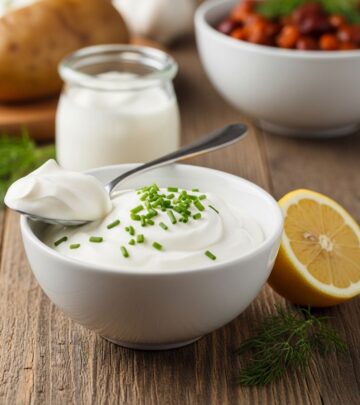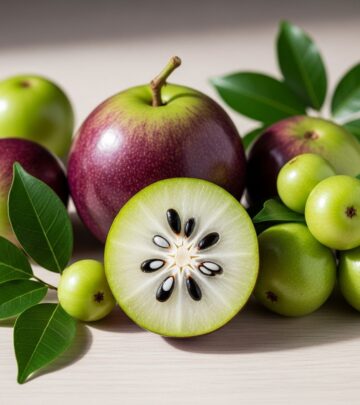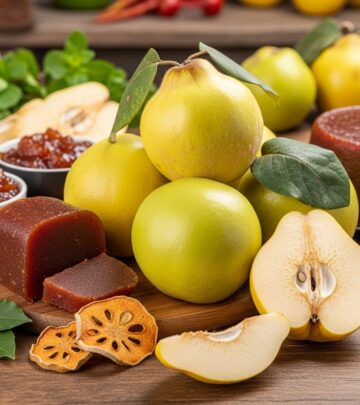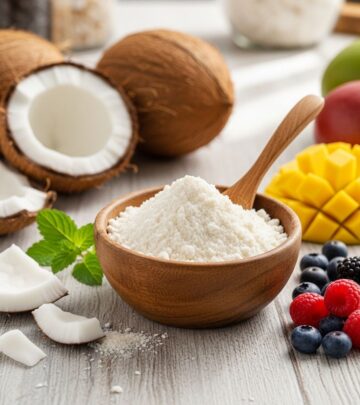Black Gram (Urad Dal): Nutrition, Benefits, Uses, and Side Effects
A kitchen staple that delivers essential nutrients and bold flavor to your daily cooking.
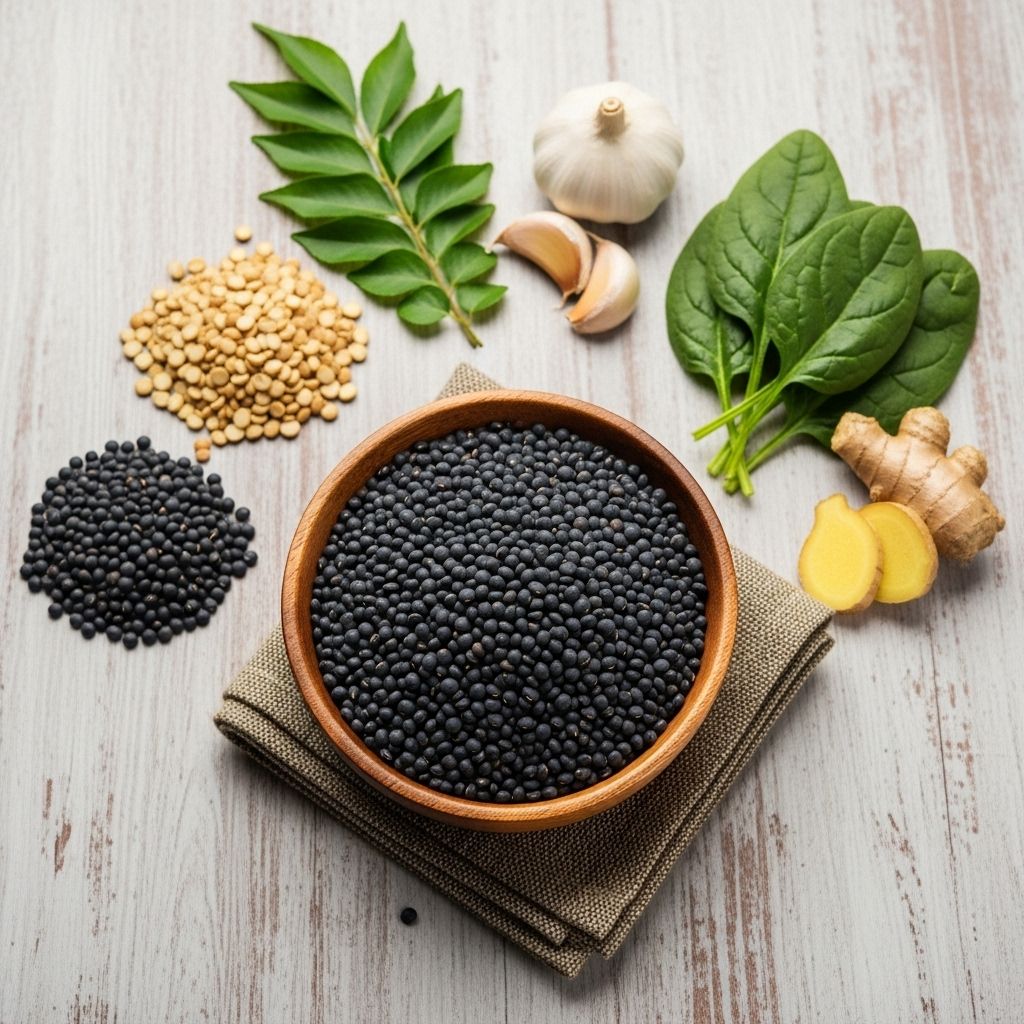
Black Gram (Urad Dal): Nutrition, Health Benefits, Uses, and Side Effects
Black gram (Vigna mungo), also known as urad dal, is a staple in Indian cuisine renowned for its unique taste, diverse applications, and impressive nutritional value. This article provides an in-depth look at black gram—its key nutrients, health benefits, culinary and medicinal uses, preparation tips, possible side effects, and frequently asked questions.
What Is Black Gram?
Black gram is a small, black-skinned pulse widely grown in South and Southeast Asia. The inside of the seed is white, and the grain is consumed whole or split, with or without the skin. Also called urad dal, this versatile legume forms the foundation of many iconic dishes such as dals, idli, dosa, vada, and even desserts in Indian cuisine.
- Botanical name: Vigna mungo
- Common names: Black gram, urad dal, split black lentil
- Originally cultivated in India and now spread across Asia and other tropical regions
Black Gram Nutrition Facts
Black gram is packed with nutrients essential for overall health. Both whole and split urad dal are excellent plant-based sources of protein and dietary fiber, along with minerals, vitamins, and antioxidants.
| Nutrient | Value per 100g (raw) |
|---|---|
| Calories | 341 kcal |
| Protein | 25g |
| Fat | 1.6g |
| Carbohydrates | 59g |
| Fiber | 18g |
| Calcium | 138mg |
| Iron | 7.57mg |
| Magnesium | 267mg |
| Potassium | 983mg |
| Vitamin B1 (Thiamine) | 0.273mg |
Values may vary depending on preparation and source.
- Rich in protein, making it especially valuable for vegetarian and vegan diets
- Good source of complex carbohydrates and dietary fiber for digestive health
- Contains essential minerals: iron, calcium, magnesium, potassium, phosphorus
- Provides B-vitamins, notably thiamine, riboflavin, and folate
- Low in fat and contains no cholesterol
8 Impressive Health Benefits of Black Gram
Black gram is not only a nutritious food but also offers a variety of health benefits:
1. Promotes Digestive Health
- High fiber content keeps the digestive tract healthy and regular.
- Helps in relieving both constipation and diarrhea.
- Acts as a natural bulk laxative.
2. Supports Heart Health
- Contains magnesium, potassium, and fiber which help regulate blood pressure and maintain cholesterol levels.
- Low in saturated fat and free from cholesterol, reducing cardiovascular risk.
3. Boosts Energy Levels
- Its carbohydrate and iron content helps fight fatigue and low energy.
- Iron aids in the production of red blood cells, combating anemia.
4. Enhances Bone Health
- Rich in calcium, magnesium, and phosphorus, essential for building and maintaining healthy bones and teeth.
5. Improves Skin and Hair
- Nutrients like iron, protein, and B vitamins support healthy skin and hair.
- Used in traditional Ayurvedic skincare and hair masks for shine and smoothness.
6. Regulates Blood Sugar Levels
- Low glycemic index makes it suitable for diabetics and stabilizes blood sugar rises after meals.
- Supports insulin function and helps prevent sudden spikes.
7. Aids in Weight Management
- High protein and fiber induce satiety, helping you feel full longer.
- Beneficial for healthy weight loss and balancing appetite.
8. Strengthens the Nervous System
- Rich in B vitamins (thiamine, riboflavin) vital for brain function and nerve health.
Traditional and Medicinal Uses of Black Gram
Black gram occupies a special place in traditional healing systems—especially Ayurveda, Siddha, and Unani medicine. It is often used as a food remedy and in topical formulations.
- Ayurveda: Used for nourishing tissues, improving strength, enhancing reproductive health, and pacifying Vata dosha.
- Remedies for: Joint pain, rheumatism, boosting immunity, skin problems, hair treatments.
- External application: Used in face packs and hair masks for cleansing, exfoliating, and strengthening hair roots.
- As poultices: Black gram paste or powder is applied to inflamed areas, wounds, or joints for pain relief.
Culinary Uses: How to Use Black Gram
Black gram is a versatile legume and the backbone of countless South Asian dishes. Its earthy flavor and creamy texture shine in both savory and sweet recipes.
Common Forms
- Whole Black Gram: Used for stews, soups, and sprouting; retains the outer skin and deeper flavor.
- Split Black Gram (With/Without Skin): Quicker to cook, common in dals and batters.
- Black Gram Flour: Used in batters, doughs, and even skincare applications.
Popular Black Gram Dishes
- Dal Makhani: A creamy, hearty curry of whole urad dal simmered with kidney beans, tomatoes, butter, and spices.
- Idli & Dosa: Fermented rice and urad dal batter steamed or pan-fried for iconic South Indian breakfast dishes.
- Medu Vada: Protein-rich savory donuts made from urad dal batter, deep-fried and spiced.
- Papads (Papadum): Thin crispy wafers prepared from black gram flour.
- Black Gram Curry: Spiced gravies and stews, vegetarian or with meat.
Quick Black Gram Recipe: Simple Urad Dal Curry
- Soak 1 cup whole black gram overnight. Drain and rinse.
- Cook in a pressure cooker with 3 cups water until tender.
- Heat 2 tbsp oil/ghee, sauté cumin, mustard seeds, garlic, ginger, onion, and tomatoes.
- Add turmeric, chili powder, coriander, salt, and the cooked dal. Simmer for 15–20 minutes.
- Garnish with fresh coriander. Serve hot with rice or roti.
How to Select and Store Black Gram
- Select even, undamaged black gram beans/dal with no signs of moisture or pests.
- Store in an airtight container in a cool, dry place away from sunlight.
- For long-term storage, refrigerate or freeze to prevent insect infestation.
- Soak whole beans for 6–8 hours before cooking to reduce cook time and enhance digestibility.
Precautions and Possible Side Effects
While black gram is generally considered safe and beneficial, certain individuals should observe precautions:
- Flatulence and Bloating: May cause gas or bloating in sensitive individuals due to oligosaccharides and fiber. Soaking, rinsing, and proper cooking reduce this effect.
- Allergies: Rare, but those allergic to legumes should avoid consumption.
- Gout and Kidney Stones: Contains purines, which may exacerbate certain conditions. Consult a physician if you have such health issues.
- Oxalate Content: Like other pulses, may contribute to oxalate load in susceptible individuals.
Frequently Asked Questions (FAQs)
Q1: Is black gram the same as urad dal?
A: Yes, black gram refers to the legume Vigna mungo, commonly known as urad dal in India. Depending on the recipe and region, it may be used whole, split, with or without skin.
Q2: Can I consume black gram daily?
A: Black gram can be eaten daily as part of a balanced diet. Moderation is key, especially if you are prone to digestive issues.
Q3: Is black gram gluten-free?
A: Yes, black gram is naturally gluten-free and safe for people with gluten intolerance or celiac disease.
Q4: Can diabetics eat black gram?
A: Yes, due to its low glycemic index, high protein, and fiber, black gram is suitable for people with diabetes. Always consult your doctor about major diet changes.
Q5: How does black gram benefit hair and skin?
A: It is used in many DIY masks and packs to cleanse, exfoliate, soothe inflammation, and strengthen hair. The protein and minerals support healthy hair and glowing skin.
Q6: Can black gram cause any side effects?
A: Black gram is safe when eaten in reasonable amounts. Overconsumption may cause gas, bloating, or worsen gout/kidney problems in susceptible individuals.
Conclusion
Black gram (urad dal) is a powerhouse food with a remarkable nutritional profile and wide-ranging health benefits. Whether enjoyed in comforting curries, crispy vadas, or soothing soups, this humble pulse packs flavor, nourishment, and versatility. Add black gram to your kitchen and explore the rich culinary heritage and health-promoting properties it brings.
References
Read full bio of Sneha Tete


